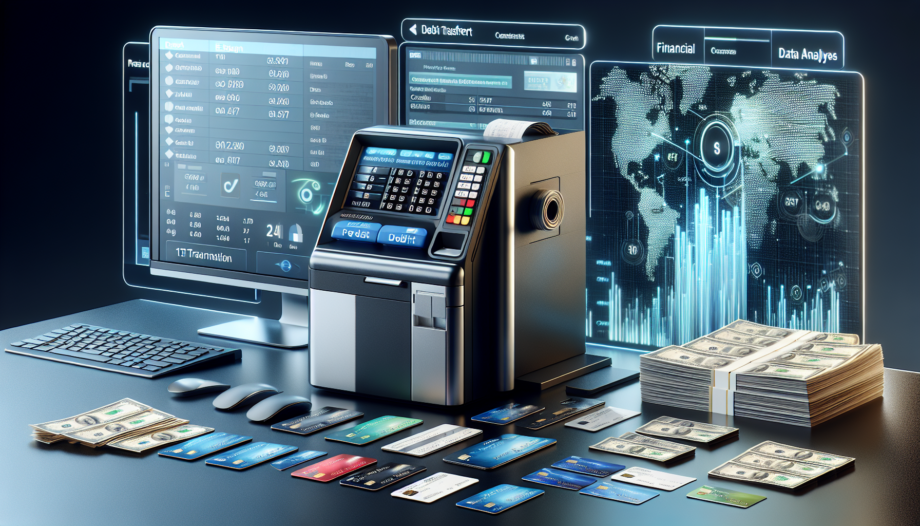What is Electronic Funds Transfer (EFT)?
Electronic Funds Transfer (EFT) is a digital method of moving money from one bank account to another without the need for physical cash, checks, or human intervention. EFT is an umbrella term that encompasses various types of electronic payments, including direct deposits, ATM transactions, and online bill payments.
EFT has revolutionized the way we transfer money, making it faster, more secure, and more convenient than traditional paper-based methods. With the rise of e-commerce and global trade, EFT has become an essential tool for businesses and consumers alike, enabling seamless transactions across borders and time zones.
Definition of EFT
Electronic Funds Transfer (EFT) refers to the electronic movement of money from one bank account to another, without the need for paper documents or manual processing by bank employees. EFT transactions are initiated through digital networks, such as the internet or payment terminals, and are processed automatically by the banks involved.
EFT is a broad term that covers a wide range of electronic payment methods, including direct deposits, wire transfers, ATM transactions, and online bill payments. These methods vary in terms of speed, security, and cost, but they all share the common goal of facilitating fast, efficient, and secure money transfers.
How EFT Works
The Electronic Fund Transfer process involves two main parties: the sender and the receiver. When an EFT transaction is initiated, the sender’s bank account is debited, and the funds are transferred electronically to the receiver’s bank account. The transfer is processed through digital networks, such as the internet or payment terminals, and is completed automatically by the banks involved.
To initiate an EFT transaction, the sender typically needs to provide the following information:
- The recipient’s account number
- The recipient’s routing number
- The recipient’s bank name
- The amount to be transferred
Once this information is provided, the transfer is processed electronically, and the funds are typically available in the recipient’s account within one to three business days, depending on the type of EFT and the banks involved.
Types of EFT Payments
There are several types of EFT payments, each with its own unique features and benefits. Some of the most common types of EFT payments include:
- Electronic Checks: An electronic version of a traditional paper check, where the payment is processed electronically instead of through physical delivery.
- Direct Deposit: An electronic transfer of funds from one bank account to another, typically used by employers to pay employees or by government agencies to distribute benefits.
- Phone Payments: An electronic transfer initiated over the phone, where the customer provides their payment information to a customer service representative or automated system.
- ATM Transactions: Electronic transfers of funds using an Automated Teller Machine (ATM), which allows customers to withdraw cash, deposit checks, or transfer funds between accounts.
- Card Transactions: Electronic payments made using a debit or credit card, either in-person or online.
- Internet Transactions: Electronic payments made through online banking portals, mobile apps, or e-commerce websites.
ACH vs EFT
Automated Clearing House (ACH) is a type of EFT that is processed through the ACH network, a nationwide system that connects banks and credit unions across the United States. ACH transfers are known for their security, as they go through several layers of encryption and authentication before being processed.
While all ACH transfers are a type of EFT, not all EFTs are ACH transfers. Other types of EFT, such as wire transfers and ATM transactions, do not go through the ACH network and may have different processing times and security measures.
EFT vs Wire Transfer
EFT and wire transfers are both electronic methods of transferring funds, but they differ in terms of their processing times and the networks they use. Wire transfers are typically processed through the Federal Reserve’s Fedwire system, while EFTs are processed through the ACH network or other electronic payment networks.
Wire transfers are generally faster than EFTs, with funds often available on the same day the transfer is initiated. However, wire transfers also tend to be more expensive than EFTs, with higher transaction fees and processing costs.
EFT Security and Regulation
Security is a top concern when it comes to electronic fund transfers, as the movement of money through digital networks can be vulnerable to hacking, fraud, and other forms of cybercrime. To address these concerns, EFT providers employ a range of security measures, such as encryption, multi-factor authentication, and fraud detection algorithms.
In addition to these technical safeguards, EFT transactions are also subject to various regulations and consumer protection laws, such as the Electronic Funds Transfer Act (EFTA), which sets standards for electronic payment processing and provides protections for consumers in the event of unauthorized transactions or errors.
Is EFT Safe?
EFT is generally considered a safe and secure method of transferring funds, thanks to the various security measures and regulations in place. However, the level of security can vary depending on the specific type of EFT and the provider involved.
To ensure the safety of your EFT transactions, it’s important to use trusted and reputable providers, such as well-established banks and financial institutions. It’s also a good idea to monitor your account activity regularly and report any suspicious or unauthorized transactions immediately.
Electronic Funds Transfer Act (EFTA)
The Electronic Funds Transfer Act (EFTA) is a federal law that establishes the rights, liabilities, and responsibilities of participants in electronic fund transfer systems. The EFTA provides a framework for consumer protection in the context of EFT transactions, covering issues such as unauthorized transactions, error resolution, and consumer liability.
Under the EFTA, financial institutions are required to provide certain disclosures to consumers regarding their EFT services, including information about fees, transaction limits, and error resolution procedures. The EFTA also sets standards for record retention and requires financial institutions to investigate and resolve errors in a timely manner.
Benefits of EFT Payments
EFT payments offer a range of benefits for both businesses and consumers, including:
- Cost-Effective: EFT payments eliminate the need for paper checks, envelopes, and postage, reducing transaction costs for businesses and consumers.
- Time-Saving: EFT payments are processed electronically, eliminating the need for manual handling and reducing the time required to complete transactions.
- Automated: EFT payments can be automated, allowing for recurring payments and reducing the risk of late or missed payments.
Advantages for Businesses
For businesses, EFT payments offer a range of advantages, including:
- Flexibility: EFT payments can be made on a one-time or recurring basis, allowing businesses to tailor their payment schedules to their specific needs.
- Affordability: EFT payments are generally less expensive than other payment methods, such as credit card transactions, which can help businesses reduce their operating costs.
- Speed: EFT payments are processed electronically, allowing for faster settlement times and improved cash flow for businesses.
Advantages for Consumers
For consumers, EFT payments offer a range of advantages, including:
- Convenience: EFT payments can be made from anywhere with an internet connection, eliminating the need to visit a bank or write a check.
- Safety: EFT payments are generally more secure than paper checks, which can be lost, stolen, or forged.
EFT for International Payments
EFT payments are not limited to domestic transactions; they can also be used for international payments. International EFT payments work similarly to domestic EFT payments, with funds being transferred electronically from one bank account to another.
However, international EFT payments may be subject to additional fees and regulations, such as foreign transaction fees and exchange rates. It’s important to check with your bank or financial institution to understand the specific requirements and costs associated with international EFT payments.
EFT and the Future of Payments
As technology continues to evolve, EFT payments are becoming increasingly important in the world of finance. The rise of financial technology (fintech) companies has led to the development of new payment solutions that leverage EFT technology, such as mobile payment apps and peer-to-peer transfer platforms.
In the realm of e-commerce, EFT payments are playing a crucial role in enabling businesses to reach a global audience and process transactions seamlessly across borders. As the global e-commerce landscape continues to expand, the importance of EFT payments will only continue to grow.
Looking ahead, it’s clear that EFT payments will remain a critical component of the financial ecosystem, driving innovation and shaping the future of payments for businesses and consumers alike.
See also:

